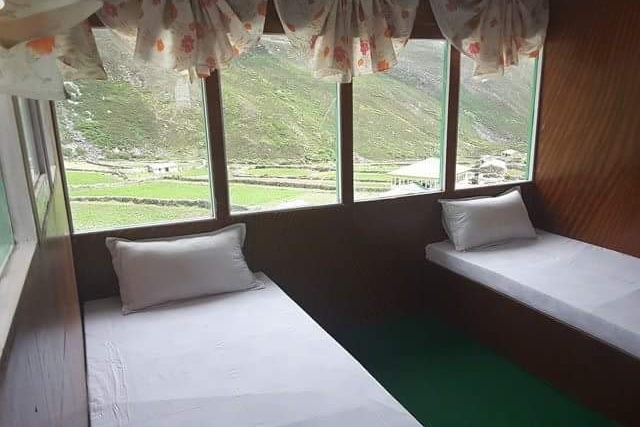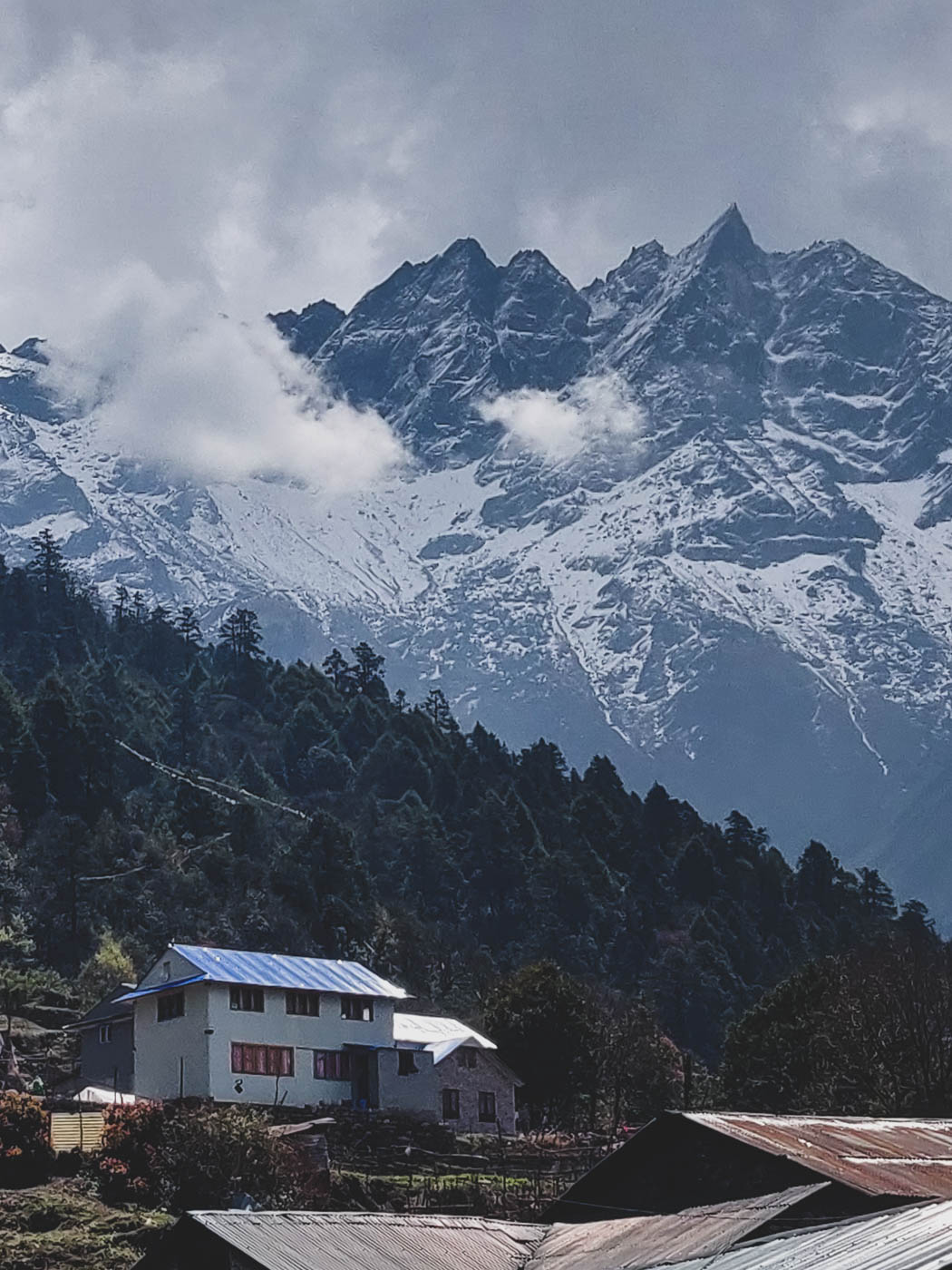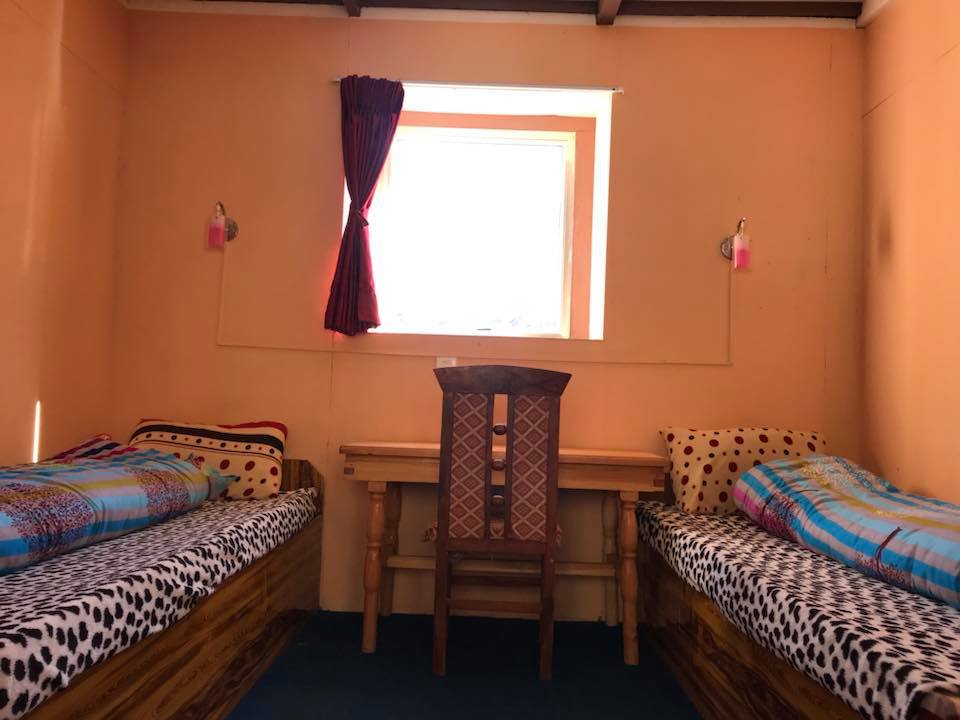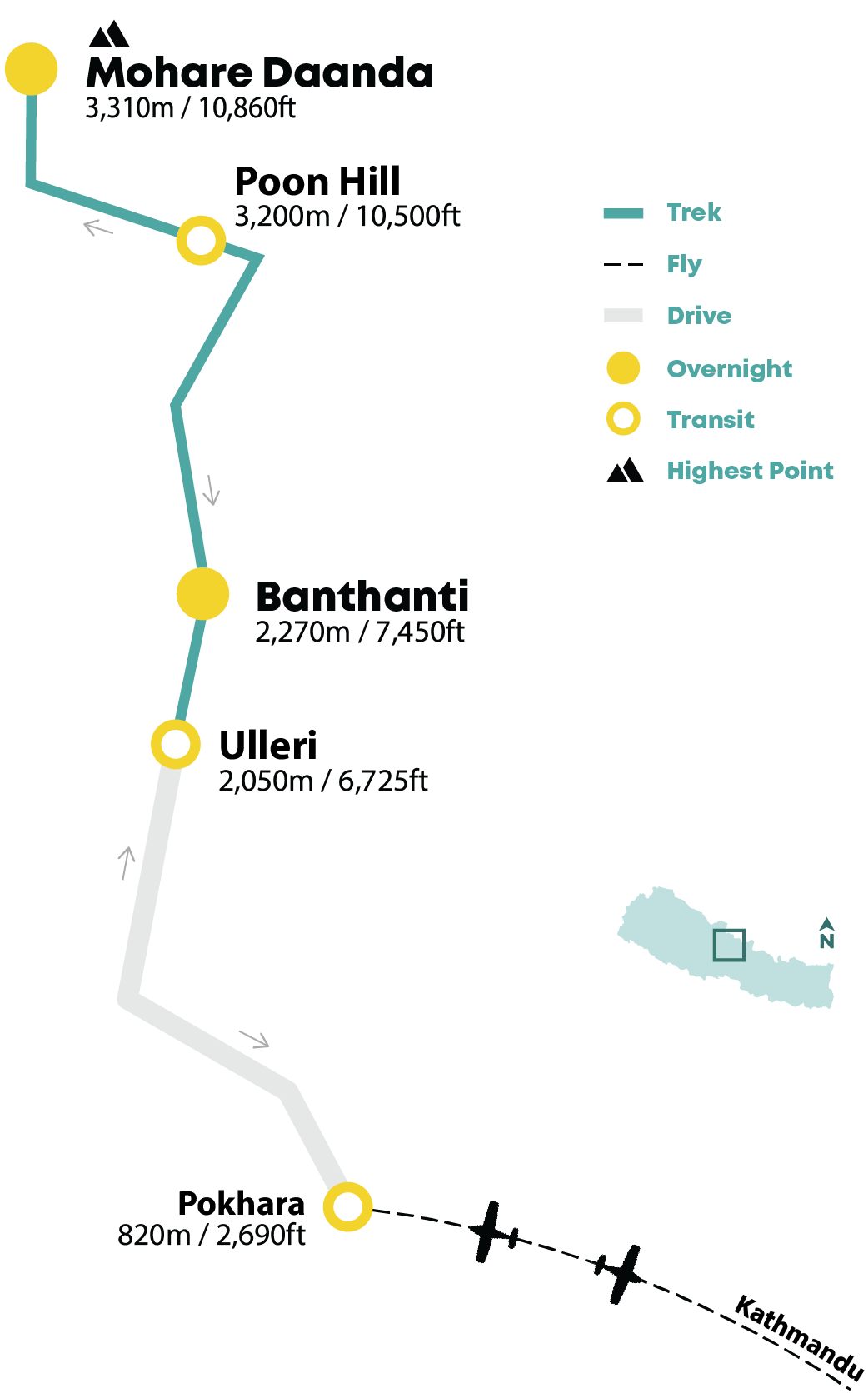|
Mountain Trek / Annapurna Region / Nepal Poon Hill and Mohare Express TrekNext tentative Date: Available as a Private Trek on a date of your preference.
A short escapade to the mesmerizing vantage points of Mohare and Poon Hill for stunning mountain views and breathtaking sunrise and sunset stretching over the horizon. |
Overview
A short escapade to the mesmerizing vantage points of Mohare and Poon Hill for stunning mountain views and breathtaking sunrise and sunset stretching over the horizon.
Highlights
| Treat yourself to the breathtaking mountain views of Annapurna (10th highest in the world) and Dhaulagiri (7th highest) mountain ranges from the vantage points of Ghorepani, Poonhill and Mohare. | |
| Witness an unforgettable sunrise and sunset over the snow-capped mountains seen from Mohare Daanda. | |
| Walk along thick rhododendron forests, streams, waterfalls, and tiny touristy villages along the trails. |
Anybody with basic hiking experience and an active lifestyle can opt for the Poon Hill and Mohare Trek. The highest elevation you will reach is 3,310m (10,860ft), making the risk of altitude sickness very low. The gradient of the trail is mostly gradual uphill, with a few steep climbs. Nonetheless, we maintain a very comfortable hiking pace throughout the trek.
Accommodation during the trek is at basic mountain lodges. You will be accompanied by an experienced guide and porters to carry your luggage during the journey.
Best time to go
JanFebMarAprMayJunJulAugSepOctNovDec
JanFebMarAprMayJun
JulAugSepOctNovDec
| Group Sizepax | Fixed Departureprices per person | Regularprices per person |
| 2 - 3 | USD 650 | USD 660 |
| 4 - 7 | USD 560 | USD 600 |
| 8 & up | USD 535 | USD 560 |
|
|
|
|
|
Prices valid until Dec 31st, 2026
Prices for expats (with a valid work ID and work/student visa) is less by USD 75 per person. Prices differ contingent on the rates charged by airlines and hotels.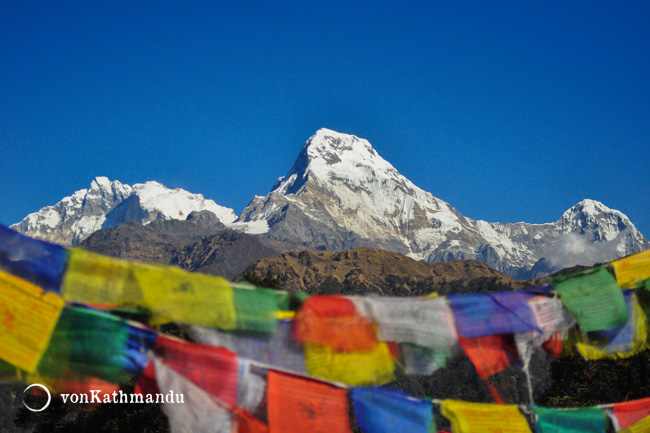
Colorful prayer flags frame Barhasikhar, Annapurna South and Hiuchuli
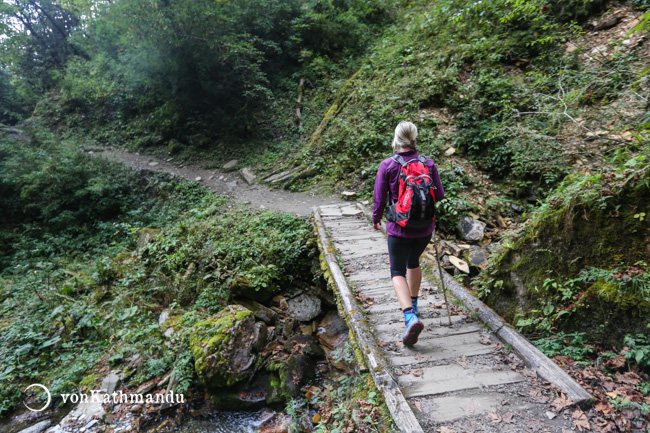
Crossing one of many creeks between Tadapani and Ghandruk
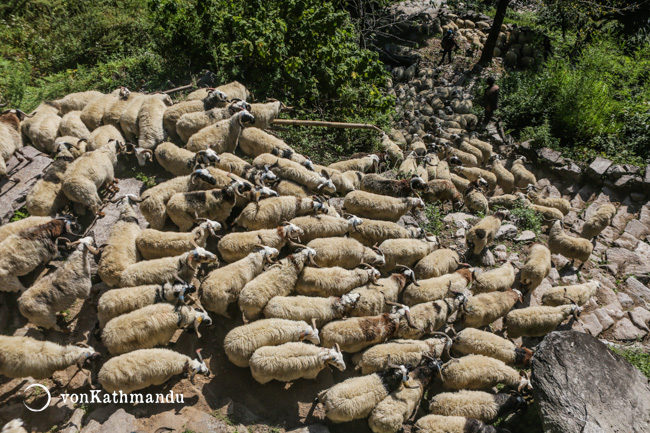
Herd of sheep heading down Ulleri
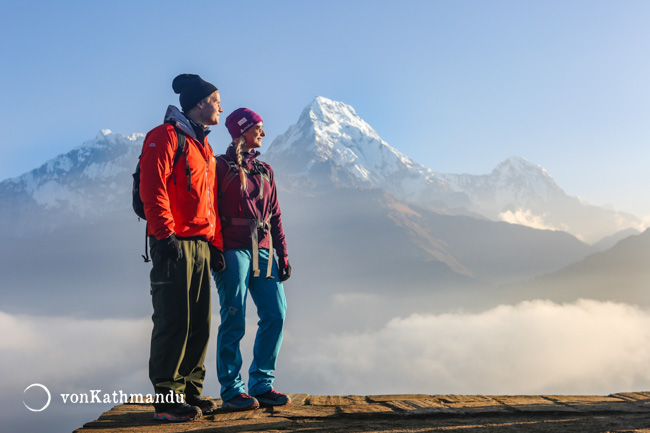
Annapurna South steals the show on the climb up to Mohare
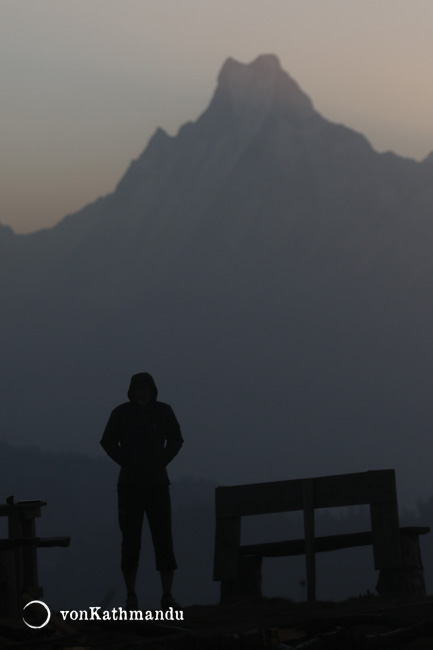
Crisp mountain mornings can be chilly but the sight of the peaks, seen here Machhapuchare or Fishtail, is one to behold
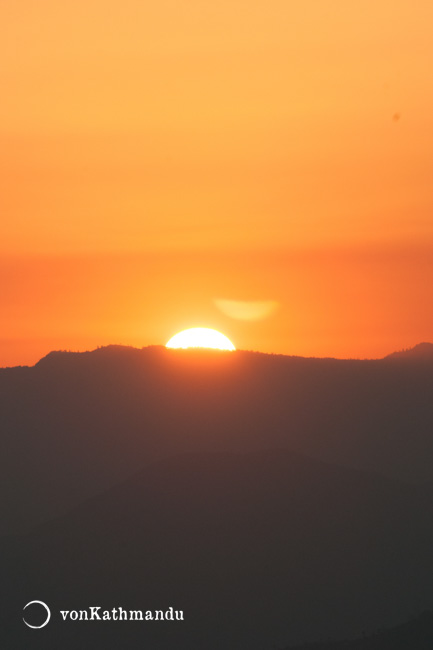
Sunrise in Ghandruk
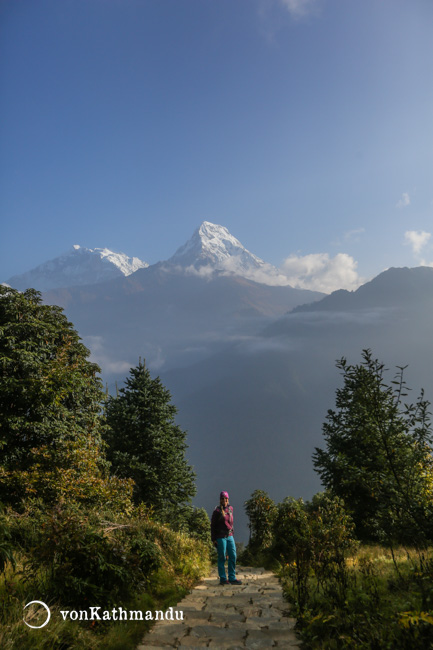
Annapurna South sticks out like a sore thumb along this trail
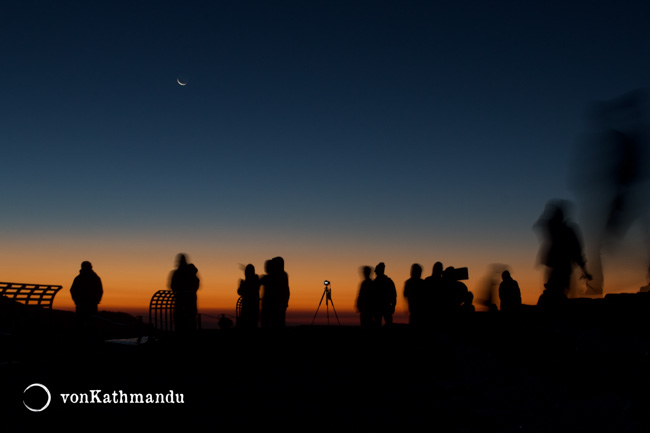
Waiting for the sun at Mohare Daanda
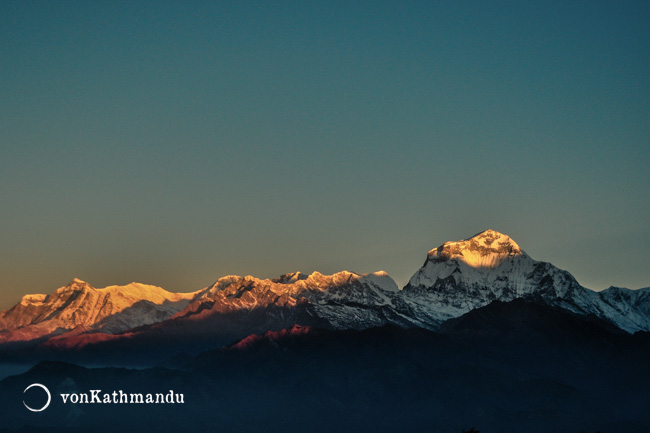
Dhaulagiri gets first rays of sun
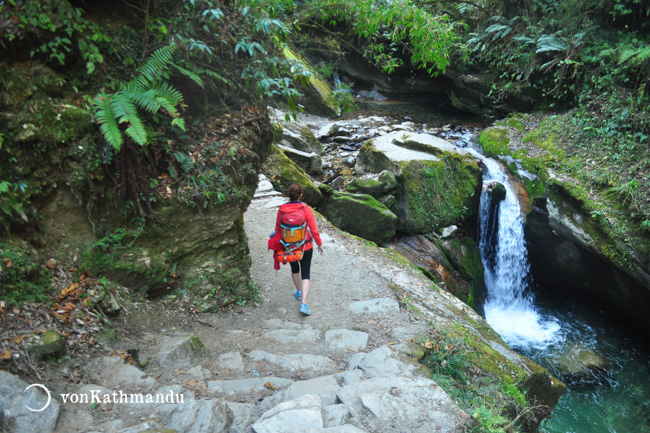
Walk along streams and several waterfalls on the trek
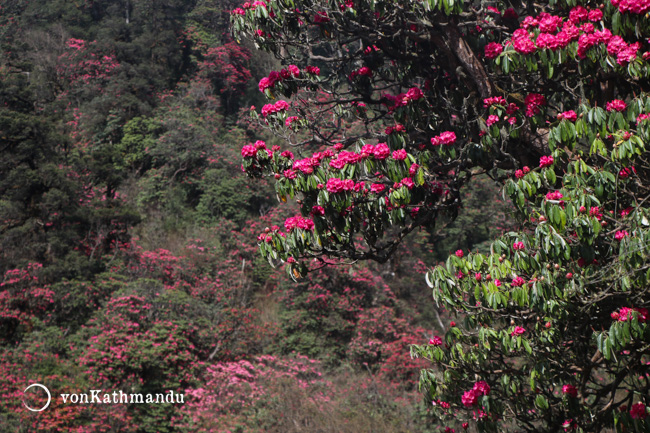
Rhododendron or Laliguras is the national flower of Nepal, and blooms in spring, painting entire forests red
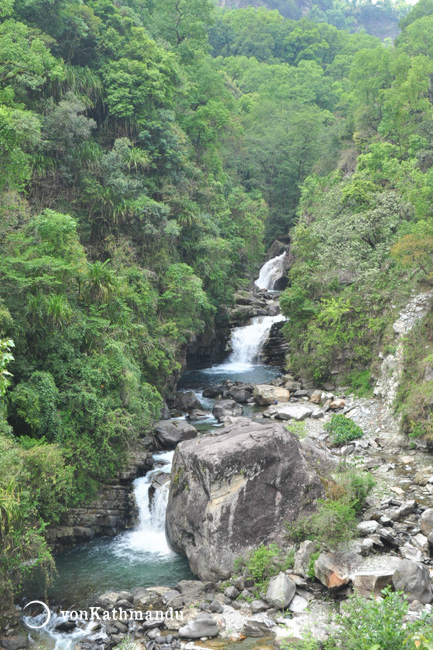
A waterfall on Modi River near Birethanti
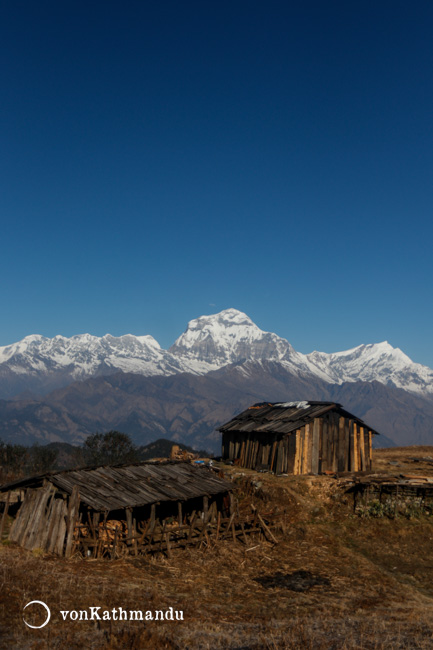
A tiny hut in the mountains with great views of Dhaulagiri mountain
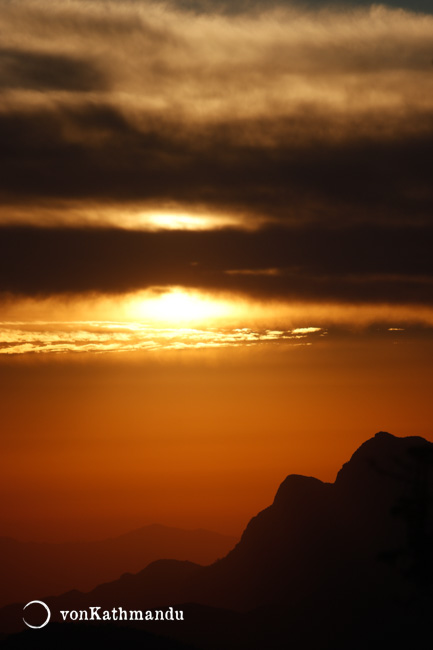
Sunset seen from Mohare Daanda
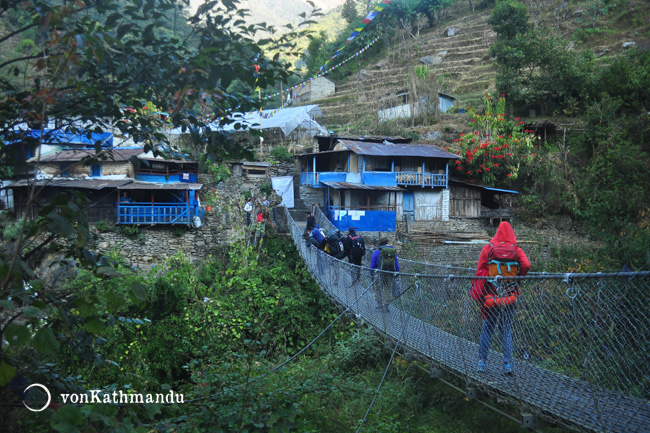
Crossing a suspension bridge before the climb to Ulleri
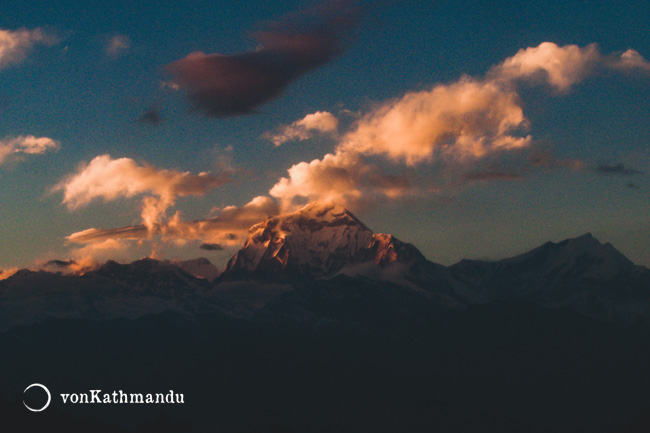
Evening clouds light up Dhaulagiri
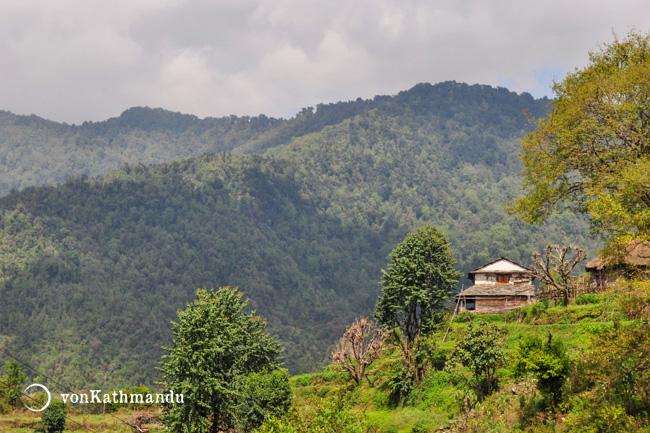
Traditional house near Ghandruk
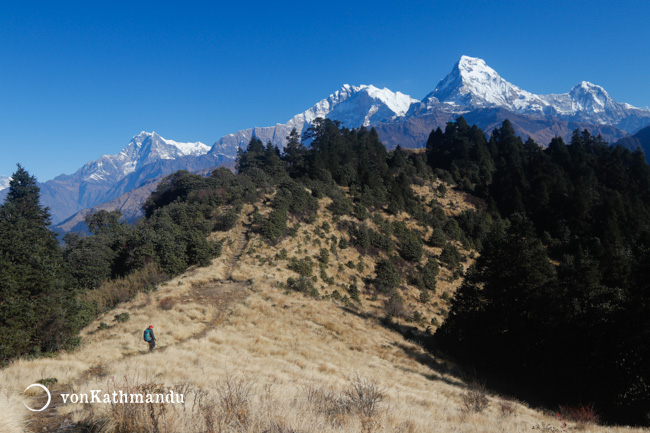
Annapurna is straight ahead and Dhaulagiri on the left when you walk down the ridge from Mohare
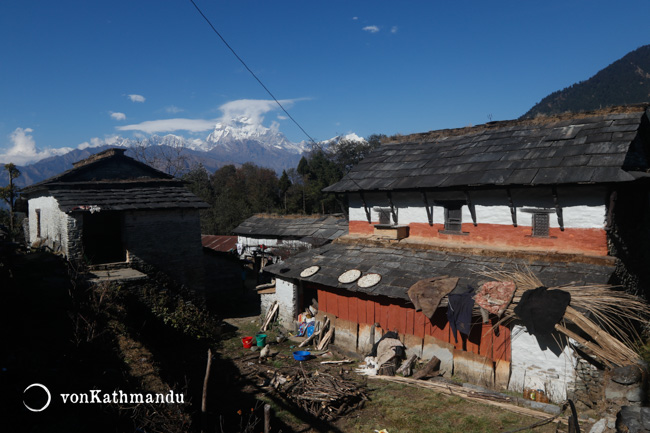
Traditional Nepali chhetri house
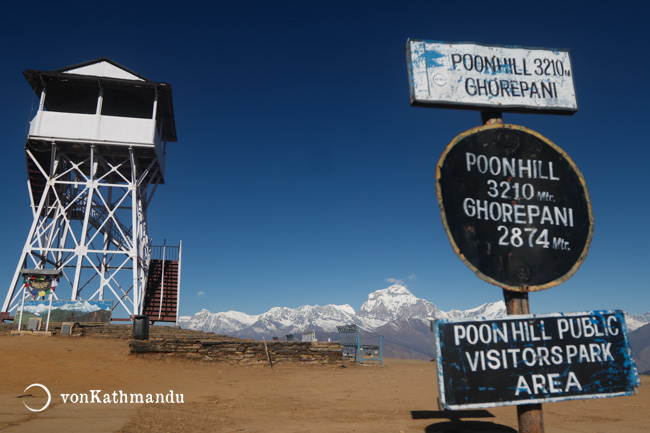
While not as high as Mohare, Poon Hill has fine glipses Dhaulagiri and Annapurna mountain ranges
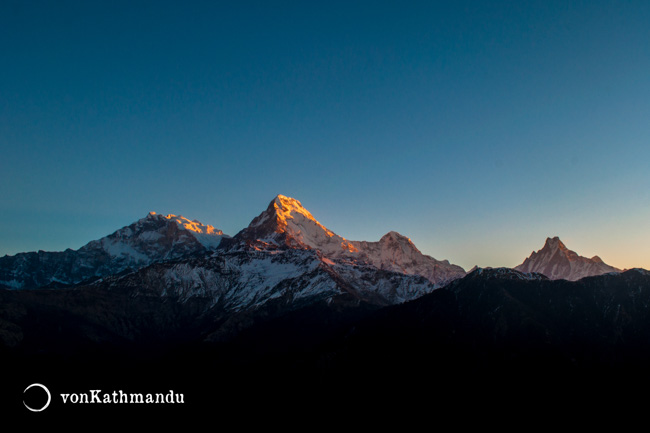
Morning lights on Annapurna range
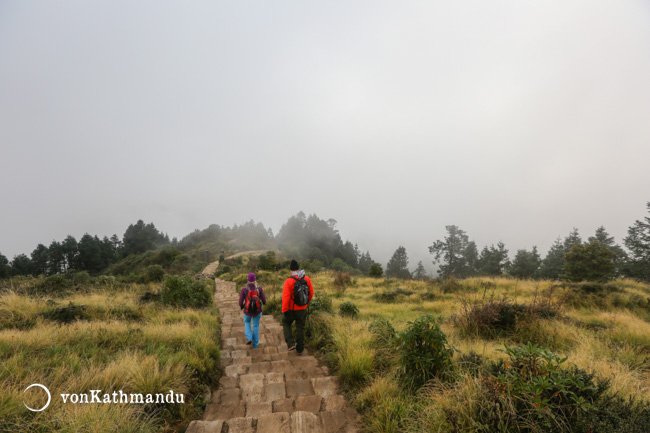
Steps leading down to Ghorepani from Poon Hill
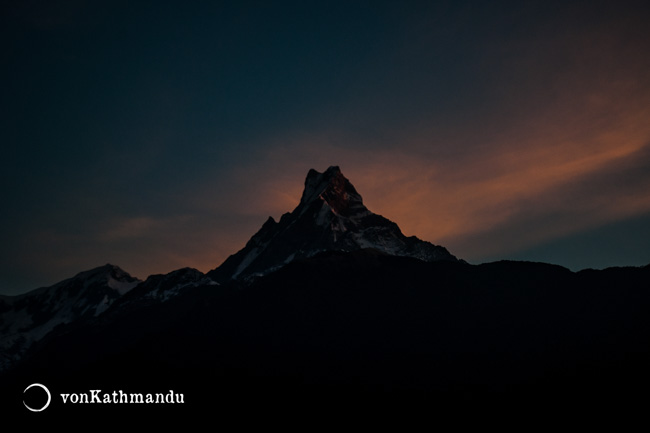
Fishtail or Machhapuchare gets its name from the twin peaks
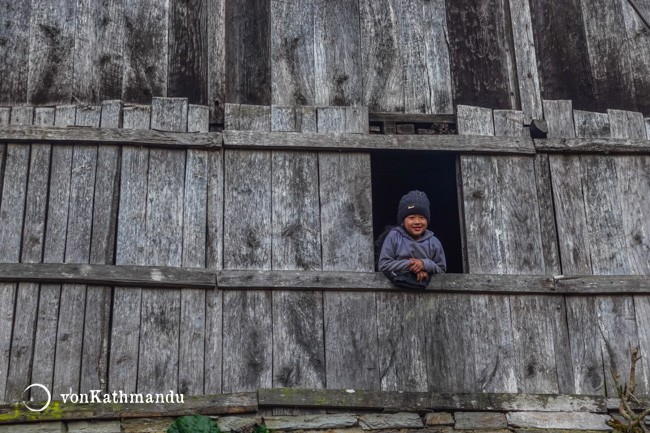
A little girl greeting trekkers passing by her house
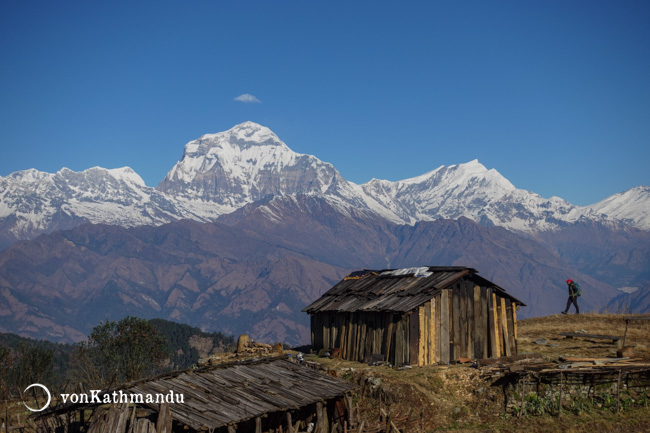
A tiny hut in the mountains with great views of Dhaulagiri range
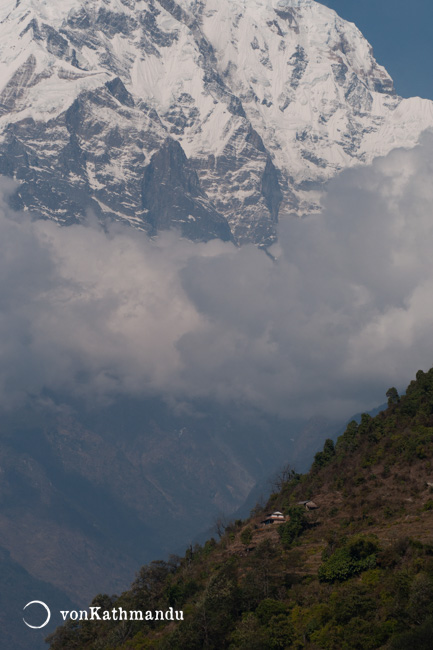
A Gurung house dwarfed by the giant massif of Annapurna South
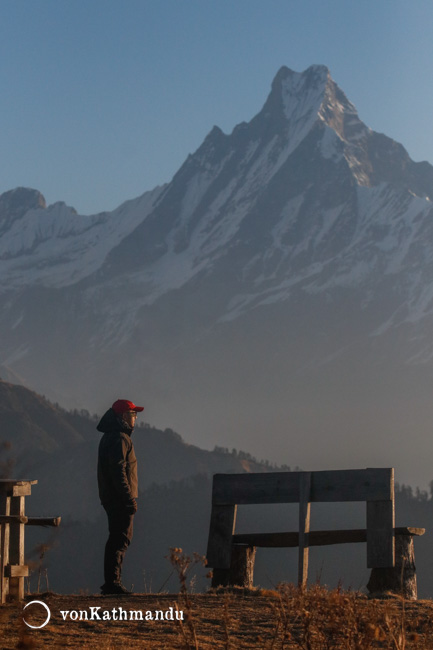
Away from the hustle and bustle of the main trail, Mohare Daanda is quiet and best kept secret among treks in Annapurna
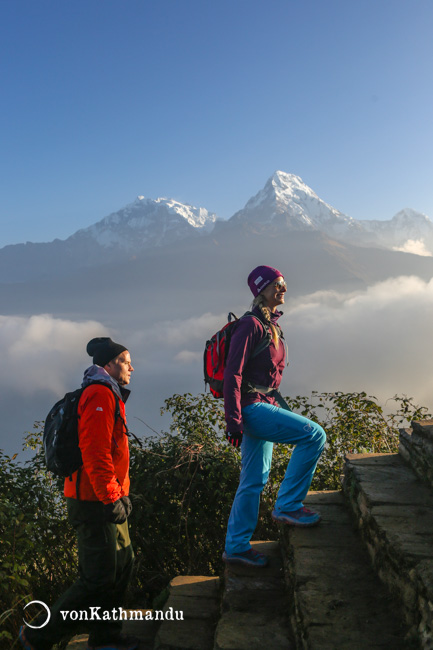
The last bit of climb to Mohare is tough on the legs, less so on the eyes
Itinerary
|
Day 1 |
Kathmandu - Pokhara - Banthanti - Nangethanti |
|
|
Day 2 |
Nangethanti - Mohare Daanda |
|
|
Day 3 |
Mohare Daanda - Banthanti - Pokhara - Kathmandu |
|
|
Day 1 |
Kathmandu - Pokhara - Banthanti - Nangethanti |
|
|
Fly from Kathmandu to Pokhara 25 mins In the morning, we take a scenic flight from Kathmandu to the gorgeous Pokhara city that sits by Phewa Lake and is dwarfed by the Annapurna range. |
|
|
Drive from Pokhara to Banthanti 2.5 to 3 hrs We drive on the blacktopped roads until Birethanti, where our permits are checked. From there, we continue our drive on off-road tracks to Banthanti, bypassing the steep uphill steps. |
|
|
Trek from Banthanti to Nangethanti 1.5 to 2 hrs | 4 kms (2.5 mi) Highest point: Nangethanti at 2520m (8268ft) | Gain/drop: +451m/-182m (+1480ft/-597ft) Nangethanti, our camp for the night, is around one and a half hours hike away. |
Meals Included: Breakfast
Accommodation: Mountain Lodge
|
Day 2 |
Nangethanti - Mohare Daanda |
|
|
Trek from Nangethanti to Mohare, via Ghorepani and Poon Hill 5 to 6 hrs | 8 kms (5 mi) Highest point: Mohare at 3310m (10860ft) | Gain/drop: +330m/-1115m (+1083ft/-3658ft) Today is mostly gradual uphill through lovely, peaceful forests. Before we know it, we reach Ghorepani to have our lunch. Poon Hill is just one short but strenuous uphill away. Enjoy views of Dhaulagiri and Annapurna mountains from here and follow the ridge to Mohare Daanda (boasting even better views) on some of the finest trails. |
Meals Included: Breakfast
Accommodation: Mountain Lodge
|
Day 3 |
Mohare Daanda - Banthanti - Pokhara - Kathmandu |
|
|
Trek from Mohare Daanda to Banthanti 5 to 6 hrs | 12 kms (7.5 mi) Highest point: Mohare at 3310m (10860ft) | Gain/drop: +479m/-1552m (+1572ft/-5092ft) Watch the magical sunrise with colors of the sky changing and revealing the mountains in all its grandeur. Behind you are rolling hills. We walk down towards Poon Hill and Ghorepani, and trace back the trails to Ulleri |
|
|
Drive from Banthanti to Pokhara 3 to 3.5 hrs |
|
|
Fly from Pokhara to Kathmandu 25 mins |
Meals Included: Breakfast
Mountain Lodge |
X Close Accommodation Popup
X Close Popup
Nepal
Mountain lodges are the basic accommodation set up by locals to cater to trekkers in the trails. The common features across all lodges are standard rooms, a spacious and heated dining hall, and a restaurant with a menu. The rooms in mountain lodges generally have two or three twin beds with a mattress and blanket. If you are used to sleeping warm, we highly recommend bringing your own sleeping bag and liner. Other amenities could be a table, hanger, and dustbin but do not expect to have charging ports and attached toilets in the rooms. Moreover, it is mandatory to have meals in the facility you’re staying at.
Room Amenities
| • | Shared Toilet |
Property Amenities
| • | Restaurant and Bar | • | Outdoor Seating | • | Mountain Views |
Mountain Lodge |
X Close Accommodation Popup
X Close Popup
Nepal
Mountain lodges are the basic accommodation set up by locals to cater to trekkers in the trails. The common features across all lodges are standard rooms, a spacious and heated dining hall, and a restaurant with a menu. The rooms in mountain lodges generally have two or three twin beds with a mattress and blanket. If you are used to sleeping warm, we highly recommend bringing your own sleeping bag and liner. Other amenities could be a table, hanger, and dustbin but do not expect to have charging ports and attached toilets in the rooms. Moreover, it is mandatory to have meals in the facility you’re staying at.
Room Amenities
| • | Shared Toilet |
Property Amenities
| • | Restaurant and Bar | • | Outdoor Seating | • | Mountain Views |
Customize this trip
Take a heli back.
For those short on time or looking to add an exhilarating experience of flying over the majestic Himalayas, you have the option to charter a private helicopter on the way down. Inquire for prices and options!
Kathmandu Hotel and Transfers
-
If you’d like us to organize airport transfers and arrange your stay in Kathmandu or any other cities, let us know. We’re happy to give you options based on your preference, and book them for you.
Here’s one of our popular 2 days add-on: USD 185 per person:
- Airport pick up and drop off, facilitated by an English-speaking representative
- 2 nights in a four-star hotel in Kathmandu (Hotel Shankar or similar) on bed & breakfast plan and twin-sharing basis
